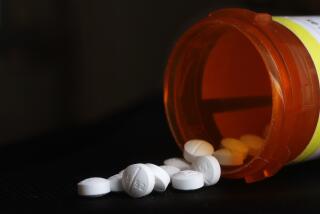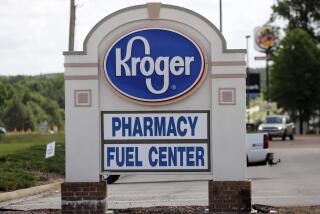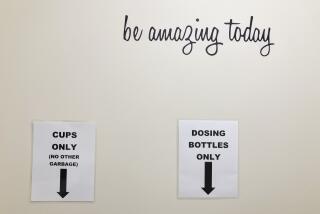Did drug company payments to doctors help fuel the opioid epidemic?
Health officials hoping to stem the opioid crisis might want to pay attention to what doctors eat for lunch.
A new research letter reports that doctors who received free meals and other kinds of payments from pharmaceutical companies tended to prescribe more opioid painkillers to their patients over the course of a year. Meanwhile, doctors who didn’t get such freebies cut back on their opioid prescriptions.
The finding was reported Monday in the journal JAMA Internal Medicine.
A team led by Dr. Scott E. Hadland of Boston Medical Center’s Grayken Center for Addiction examined Medicare data and found that 369,139 physicians prescribed an opioid painkiller at least 10 times in 2015 under one of the insurance program’s Part D plans.
Then they consulted the Centers for Medicare & Medicaid Services’ Open Payments database and found that 25,767 (or 7%) of these same doctors received “opioid-related payments” from drug companies in 2014.
The payments added up to just over $9 million, according to the report.
For doctors on the receiving end of this largesse, payments most often came in the form of food. The companies bought 97,020 meals at a total cost of $1.8 million, and the median value of these breakfasts, lunches and dinners was $13. (That means half of the meals cost more than this amount, and half cost less.)
The most expensive category for the drug companies was “speaking fees and/or honoraria.” These funds went to only 3,115 recipients, but the payments were worth a combined $6.2 million, Hadland and his colleagues found.
In addition, 1,862 physicians received $730,824 worth of travel, 360 doctors were paid $290,395 in consulting fees, and 3,011 clinicians got $79,660 in funds related to education.
None of the $9 million was used to fund medical research, the study authors noted.
The physicians who received these payments prescribed opioid painkillers an average of 539 times in 2015. That figure was higher than the average for 2014.
By contrast, the doctors who did not receive payments from pharmaceutical companies prescribed opioids an average of 134 times in 2015. That figure was lower than in 2014.
The more meals a doctor was treated to in 2014, the more opioid prescriptions he or she wrote in 2015. After controlling for other factors, the researchers calculated that for each additional meal over the course of the year, the number of opioid prescriptions rose by 0.7%.
The findings don’t prove that payments to doctors prompted them to write more prescriptions for painkillers at a time when most of their colleagues were cutting back. It’s possible that doctors who were more inclined to prescribe opioid painkillers in the first place were also more likely to be hired by drugmakers to give speeches, consult on medical issues or perform other services.
Still, the link between drug company payments and opioid prescriptions deserves further scrutiny in light of the nation’s opioid epidemic, the study authors wrote. The Centers for Disease Control and Prevention estimate that 115 Americans die each day as a result of an opioid overdose, and the road to addiction typically starts with a legitimately prescribed painkiller.
“Our findings suggest that manufacturers should consider a voluntary decrease or complete cessation of marketing to physicians,” they concluded. “Federal and state governments should also consider legal limits on the number and amount of payments.”
Follow me on Twitter @LATkarenkaplan and “like” Los Angeles Times Science & Health on Facebook.
MORE IN SCIENCE
As more older Americans struggle with dementia, what happens to their guns?
Fatal falls are on the rise for America’s senior citizens
This room was off-limits to smokers, but its air contained surprising amounts of ‘thirdhand smoke’







